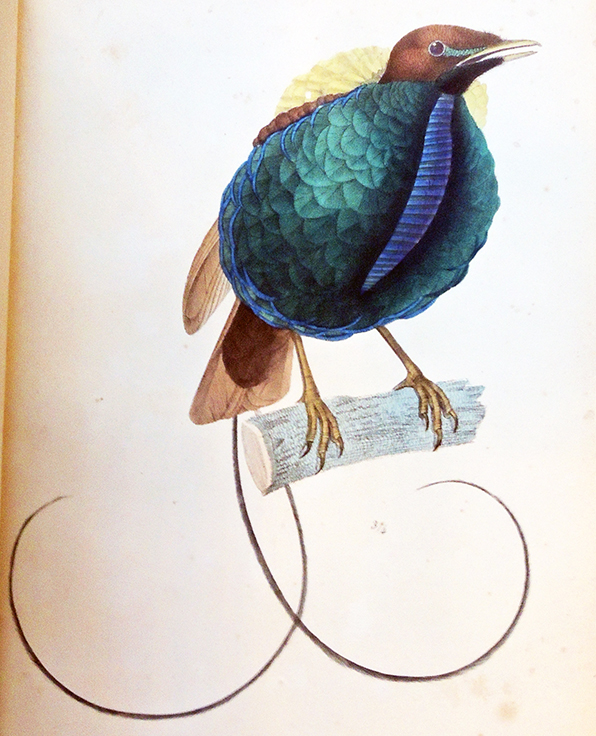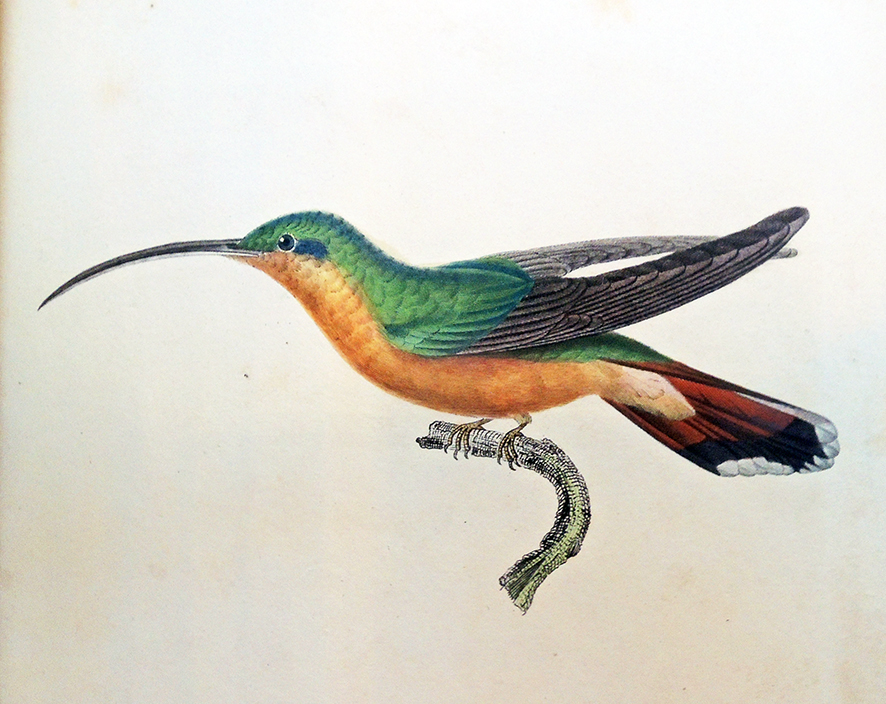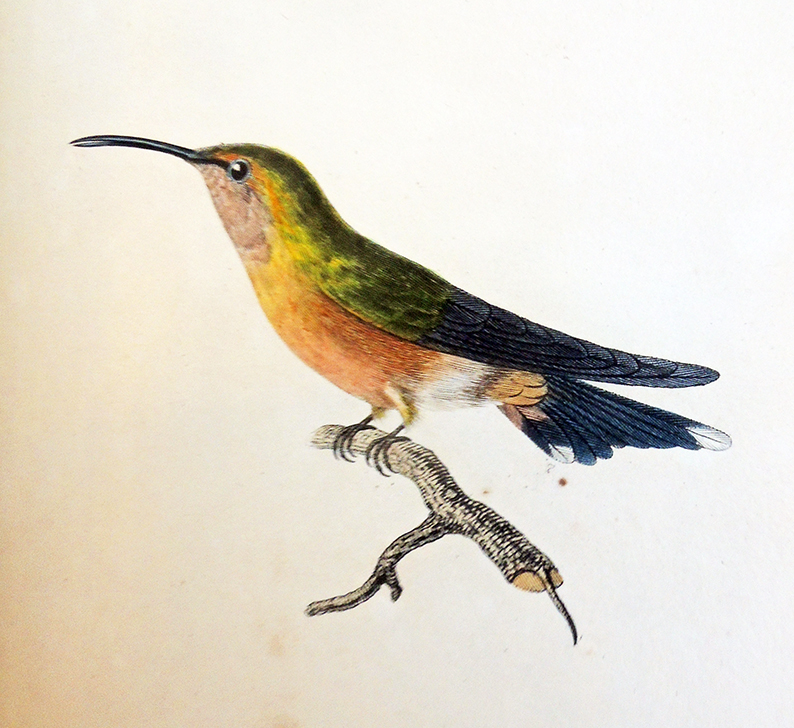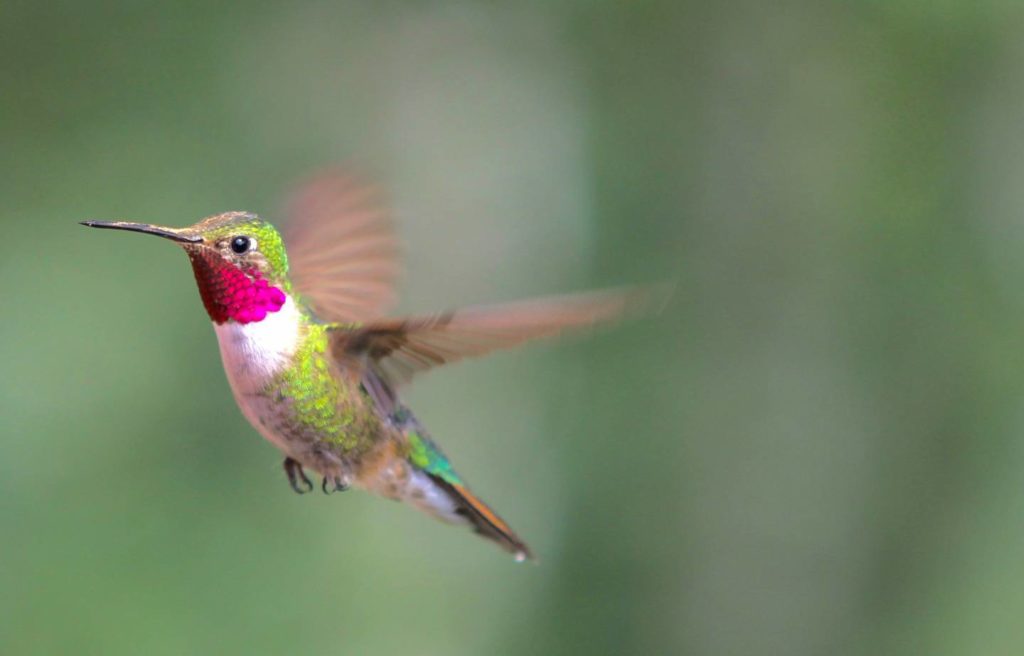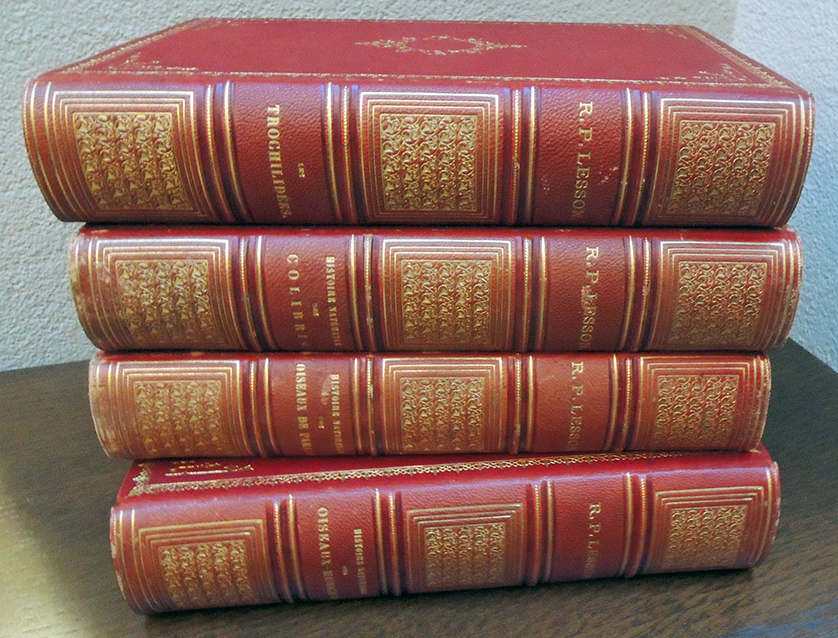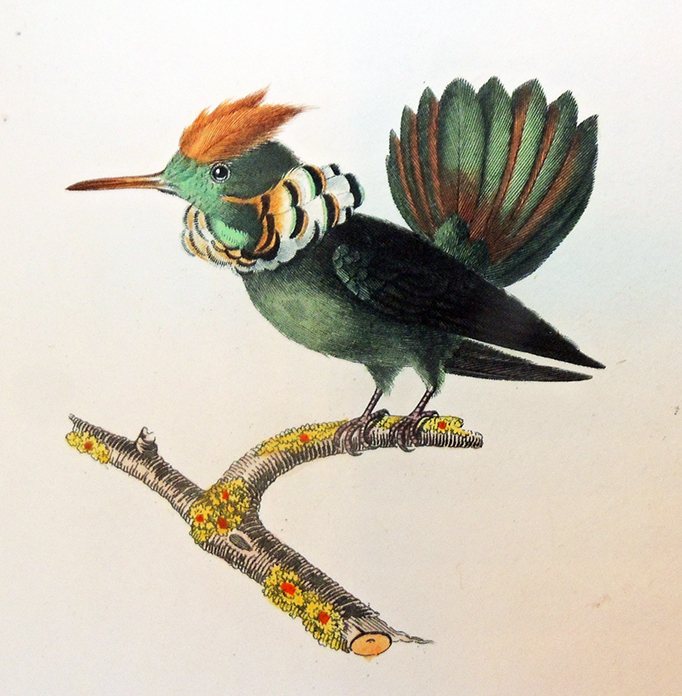
René Primevère Lesson (1794-1849), Histoire naturelle des oiseaux-mouches (with:) Histoire naturelle des colibris, suivie d’ un supplément a l’histoire naturelle des oiseaux mouches (with:) Les trochilidées ou les colibris et les oiseaux-mouches (with:) Histoire naturelle des oiseaux de paradis et des épimaques (Paris: Arthus Bertrand, 1829-1835). GAX 2020- in process.
The French surgeon René Primevère Lesson (1794–1849) served as “pharmacist and botanist on Duperrey’s round-the-world voyage of La Coquille between 1822 and1825. On the voyage he was responsible for collecting natural history specimens with his fellow surgeon Prosper Garnot and officer Dumont d’Urville. … On returning to Paris, Lesson spent seven years preparing the vertebrate zoological section of the official account of the expedition, Voyage autour du monde sur La Coquille (1826–39). …He also compiled several monographs on hummingbirds and one book on birds of paradise.” https://www.portrait.gov.au/people/ren-primevre-lesson-1794
Lesson’s three volumes on the hummingbirds and final book on birds of paradise from tropical Central & South America, the Moluccas and New Guinea are filled with 261 hand-colored plates by Jean-Gabriel Prêtre (1768-1849), Paul-Louis Oudart (1796–1850) and Louis Victor Bévalet.
To see the influence with Robert Havell Jr.’s birds of paradise: https://www.princeton.edu/~graphicarts/2012/06/havells_birds_of_paradise.html
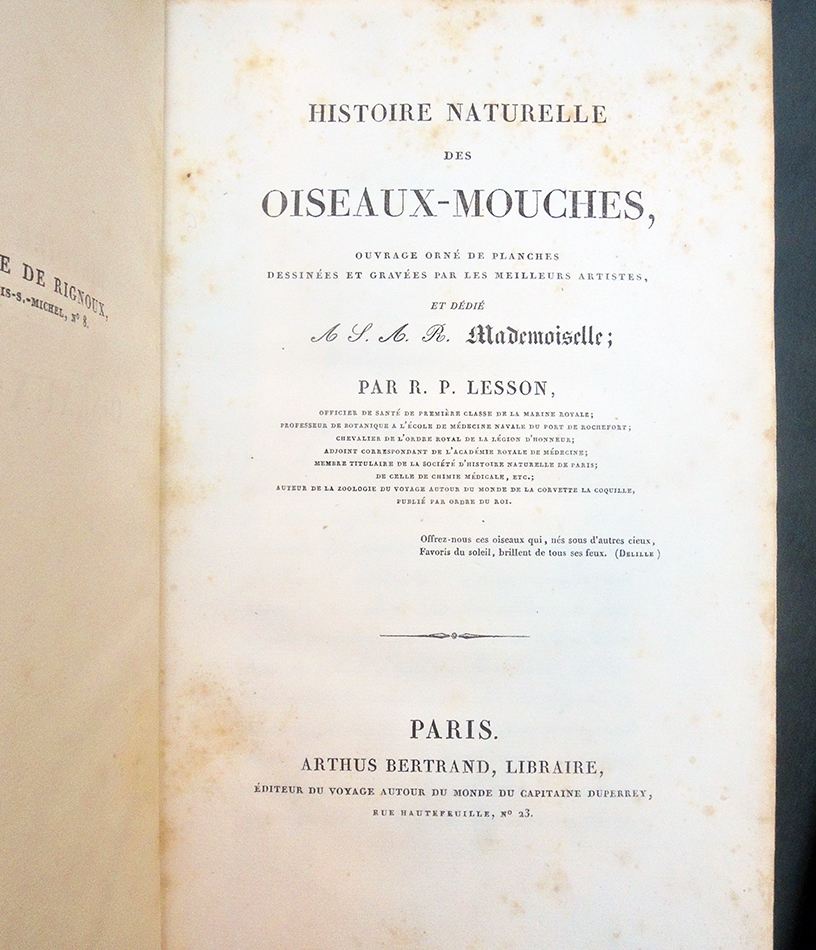 The Graphic Arts Collection acquired a handsome set of Lesson’s treatise, not in pristine condition but perfect for research and class use. Although there is foxing throughout, the colors are strong and the birds lively.
The Graphic Arts Collection acquired a handsome set of Lesson’s treatise, not in pristine condition but perfect for research and class use. Although there is foxing throughout, the colors are strong and the birds lively.
And they sound as beautiful as they look.
Recently Princeton University researchers discovered how “Hummingbirds dive to dazzle females in a highly synchronized display”: https://www.princeton.edu/news/2018/12/18/hummingbirds-dive-dazzle-females-highly-synchronized-display


